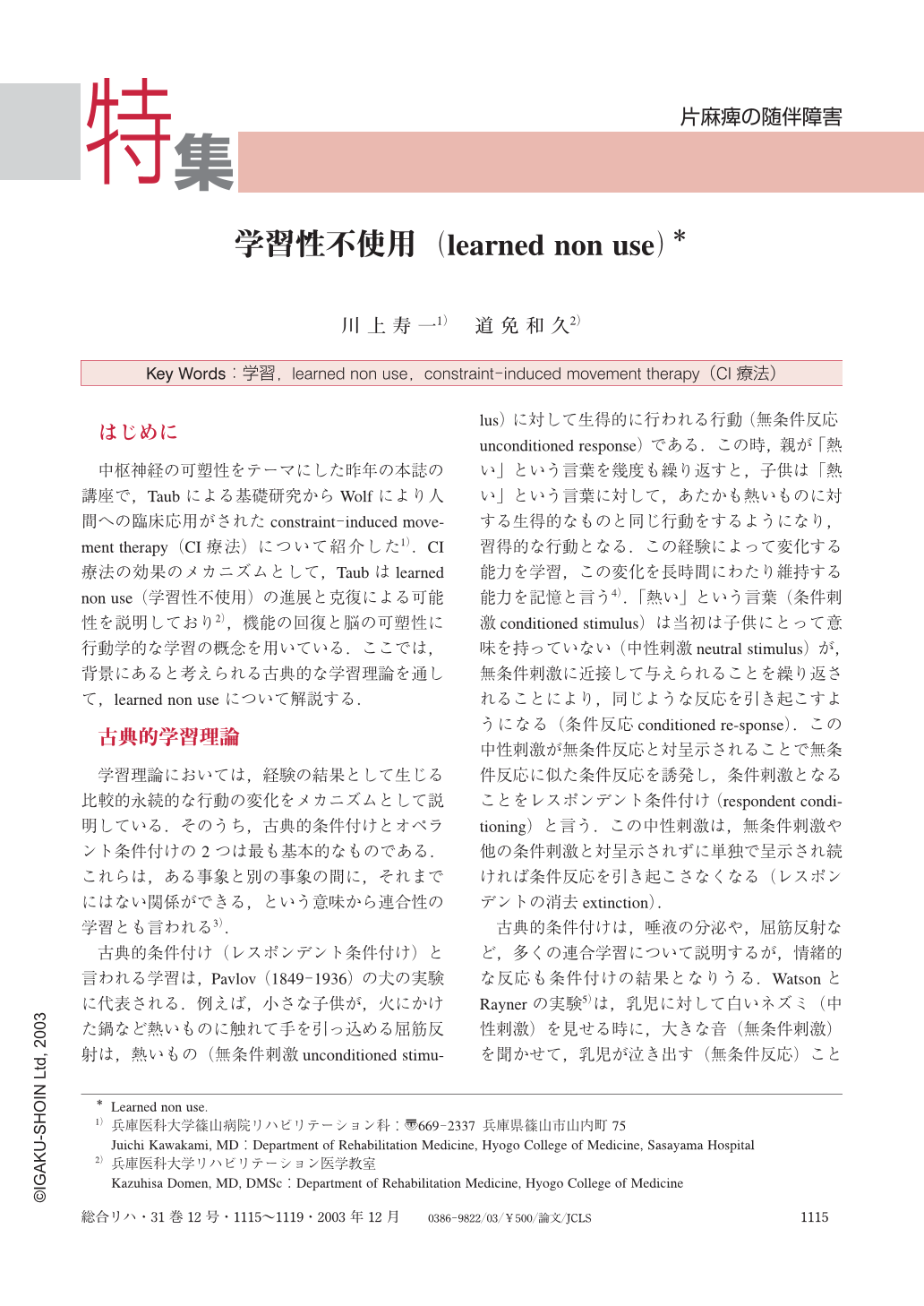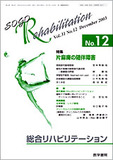Japanese
English
特集 片麻痺の随伴障害
学習性不使用(learned non use)
Learned non use.
川上 寿一
1
,
道免 和久
2
Juichi Kawakami
1
,
Kazuhisa Domen
2
1兵庫医科大学篠山病院リハビリテーション科
2兵庫医科大学リハビリテーション医学教室
1Department of Rehabilitation of Medicine, Hyogo college of Medicine, Sasayama Hospital
2Department of Rehabilitation Medicine, Hyogo College of Medicine
キーワード:
学習
,
learned non use
,
constraint-induced movement therapy(CI療法)
Keyword:
学習
,
learned non use
,
constraint-induced movement therapy(CI療法)
pp.1115-1119
発行日 2003年12月10日
Published Date 2003/12/10
DOI https://doi.org/10.11477/mf.1552100937
- 有料閲覧
- Abstract 文献概要
- 1ページ目 Look Inside
はじめに
中枢神経の可塑性をテーマにした昨年の本誌の講座で,Taubによる基礎研究からWolfにより人間への臨床応用がされたconstraint-induced movement therapy(CI療法)について紹介した1).CI療法の効果のメカニズムとして,Taubはlearned non use(学習性不使用)の進展と克復による可能性を説明しており2),機能の回復と脳の可塑性に行動学的な学習の概念を用いている.ここでは,背景にあると考えられる古典的な学習理論を通して,learned non useについて解説する.

Copyright © 2003, Igaku-Shoin Ltd. All rights reserved.


